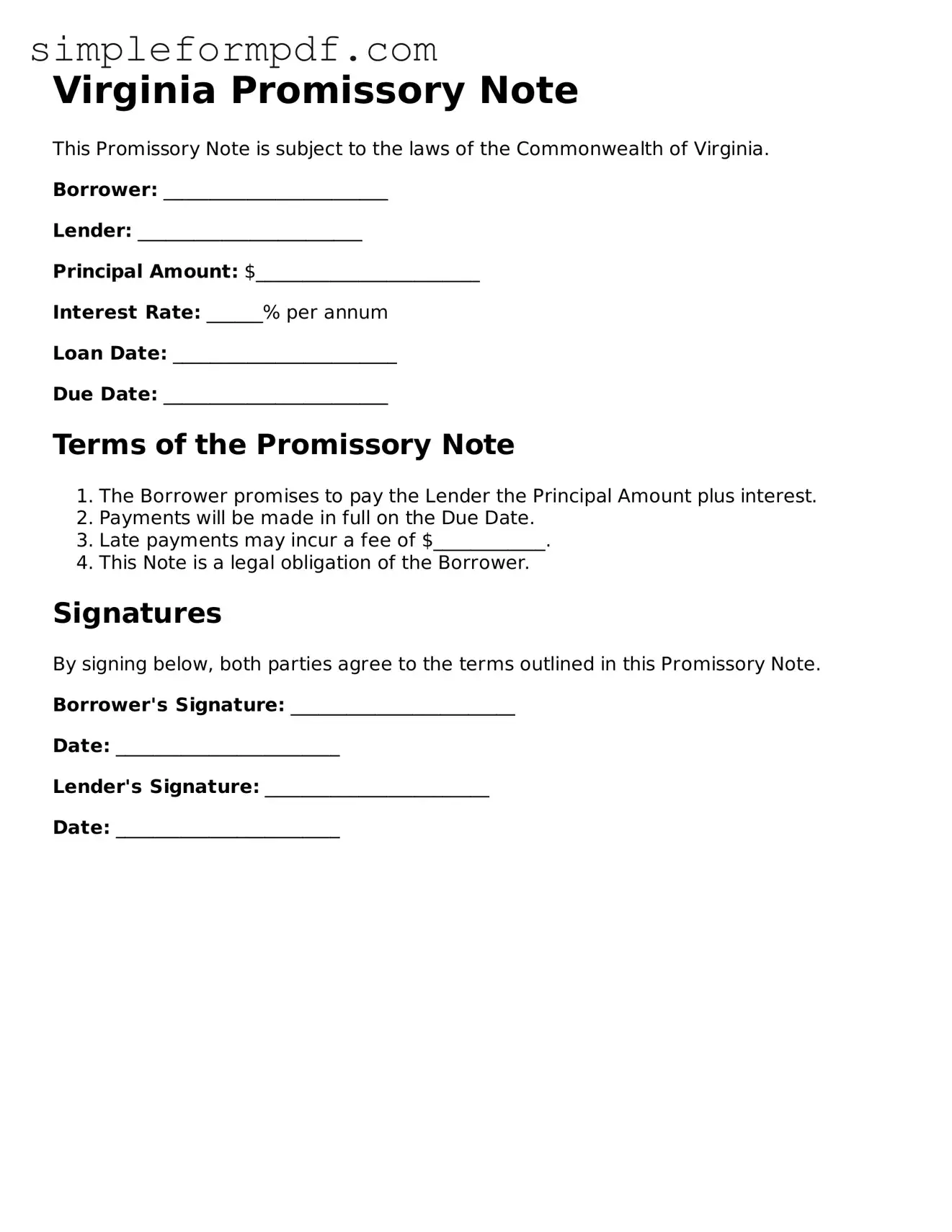Free Promissory Note Form for the State of Virginia
A Virginia Promissory Note is a legal document in which one party promises to pay a specified amount of money to another party at a designated time. This form serves as a written record of the debt and outlines the terms of repayment. To ensure your financial agreements are clear and enforceable, fill out the form by clicking the button below.
Launch Editor
